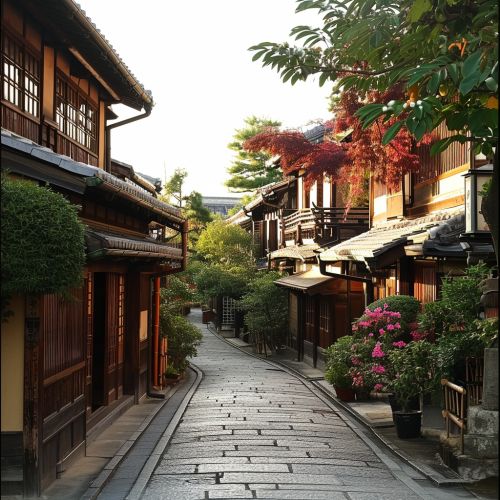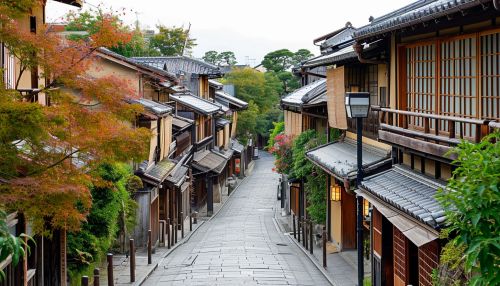Muromachi period
Overview
The Muromachi period (1336–1573), also known as the Ashikaga era, is a significant period in Japanese history that followed the Kamakura period and preceded the Azuchi-Momoyama period. Named after the Muromachi district of Kyoto, where the third shogun Ashikaga Yoshimitsu established his residence, this period is characterized by the rise and fall of the Ashikaga shogunate and the proliferation of culture, particularly in arts, architecture, and Zen Buddhism.


Political Structure
The political structure of the Muromachi period was marked by the dominance of the shogunate, a form of military government led by the shogun. The Ashikaga shogunate, established by Ashikaga Takauji, was the ruling power during this period. However, the Ashikaga shogunate was weaker than the Kamakura shogunate that preceded it, leading to a more decentralized political structure with significant power held by regional daimyos, or feudal lords.
Cultural Developments
The Muromachi period is known for its cultural advancements, particularly in the arts. This era saw the development of Noh theatre, a form of classical Japanese musical drama that is still performed today. The period also witnessed the flourishing of ink wash painting, tea ceremony, and flower arrangement.
Architecture
The architectural style of the Muromachi period, known as Shoin-zukuri, was characterized by specific features such as tatami mats, sliding doors, and a tokonoma alcove for displaying art. This style greatly influenced later Japanese architecture.
Zen Buddhism
The influence of Zen Buddhism was profound during the Muromachi period. The Zen sect, with its emphasis on meditation and the arts, played a significant role in shaping the culture of the period. Many Zen temples were built during this time, and Zen monks contributed to the development of ink painting and the tea ceremony.
Economy
The economy of the Muromachi period was marked by the growth of commerce and the emergence of a money economy. This period saw the rise of merchant and artisan classes, known as chōnin, in urban areas. The increased use of coins facilitated trade and economic activity.
Military Conflicts
The Muromachi period was also a time of significant military conflict. The Onin War (1467–1477), a civil war that led to the collapse of the Ashikaga shogunate, marked the beginning of the Sengoku period, a century-long period of political fragmentation and constant warfare.
Conclusion
The Muromachi period, with its political shifts, cultural developments, and military conflicts, played a crucial role in shaping Japanese history. Its influence can still be seen in Japanese culture, arts, and architecture today.
